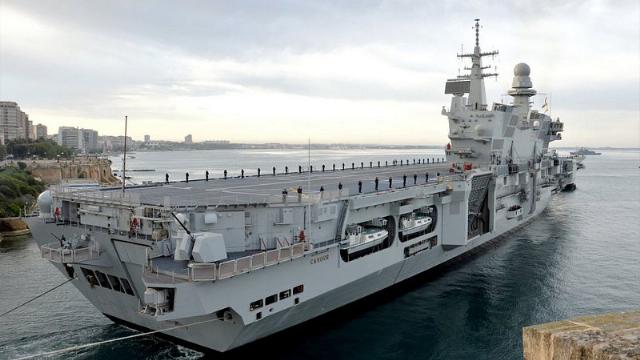The command of the Italian Navy is exploring the option of developing a nuclear-powered aircraft carrier as part of a long-term plan designed until 2040. This is reported by Navy Recognition with reference to the Chief of Staff of the Italian Navy, Admiral Enrico Credendino.
According to Credendino, all future Italian naval platforms will be designed to accommodate various types of unmanned systems. The aircraft carrier project remains at the stage of conceptual and feasibility assessment and is developing in parallel with developments in the field of nuclear energy for the Navy and industrial modernization. In particular, we are talking about the Minerva and Nuclitalia programs.

Aircraft Carrier Cavour, Italian Navy
Italian Navy
The Minerva program, officially launched in 2023 by the Office of Naval Armaments of the Italian Ministry of Defense, is exploring the possibility of using nuclear energy on advanced naval ships. The first stage of the program includes a feasibility study for the integration of next-generation naval nuclear reactors. At the second stage, a conceptual design of a nuclear-powered warship is planned. The third stage involves a comparative assessment between an existing ship with a traditional power plant and a similar ship based on a nuclear reactor.
The general contractor for the project is Fincantieri, which cooperates with a number of other Italian companies – Cetena, Ansaldo Nuclear and Rina Services, as well as with the University of Genoa.
As Admiral Credendino noted, initial research on the Minerva program is focused on submarines and destroyers, while the possibility of creating a nuclear-powered aircraft carrier is not excluded and remains at the evaluation stage for longer-term implementation.
The Nuclitalia program, launched in May 2025, with the participation of Enel, Ansaldo Energia and Leonardo, aims to evaluate advanced nuclear technologies for both civilian and military applications, with a focus on small modular reactors cooled by water.
The Italian Navy's interest in nuclear energy has historical roots. In 1959, Admiral Ernesto Giuriati proposed building nuclear attack submarines. Guglielmo Marconi designed a 3,400-ton submarine using a 30-megawatt reactor, which was going to be created on the basis of American analogues.
The development of the reactor was entrusted to CAMEN, an interagency center established in 1962 for military nuclear applications. However, the project was abandoned after 1963, when the United States ceased technical cooperation. Officially, the decision was justified by a legislative ban on the export of military nuclear technologies. The real motives were NATO's strategic constraints after the Cuban Missile crisis and political concerns about the Italian Communist Party.
A subsequent attempt to obtain technological assistance from France also failed. Although the keel of the submarine has already been laid, the program was closed.
Currently, the Italian navy operates the aircraft carrier Cavour, commissioned in 2009, and a universal amphibious assault ship (helicopter carrier). Trieste, commissioned at the end of 2024. At the same time, the Trieste is configured for the possible deployment of fifth-generation F-35B fighters with a shortened takeoff and vertical landing.
